Death, be not proud, though some have called thee
Mighty and dreadful, for thou art not so.
For those whom thou think’st thou dost overthrow
Die not, poor Death, nor yet canst thou kill me.
“Holy Sonnet 6 (or 10)”
John Donne
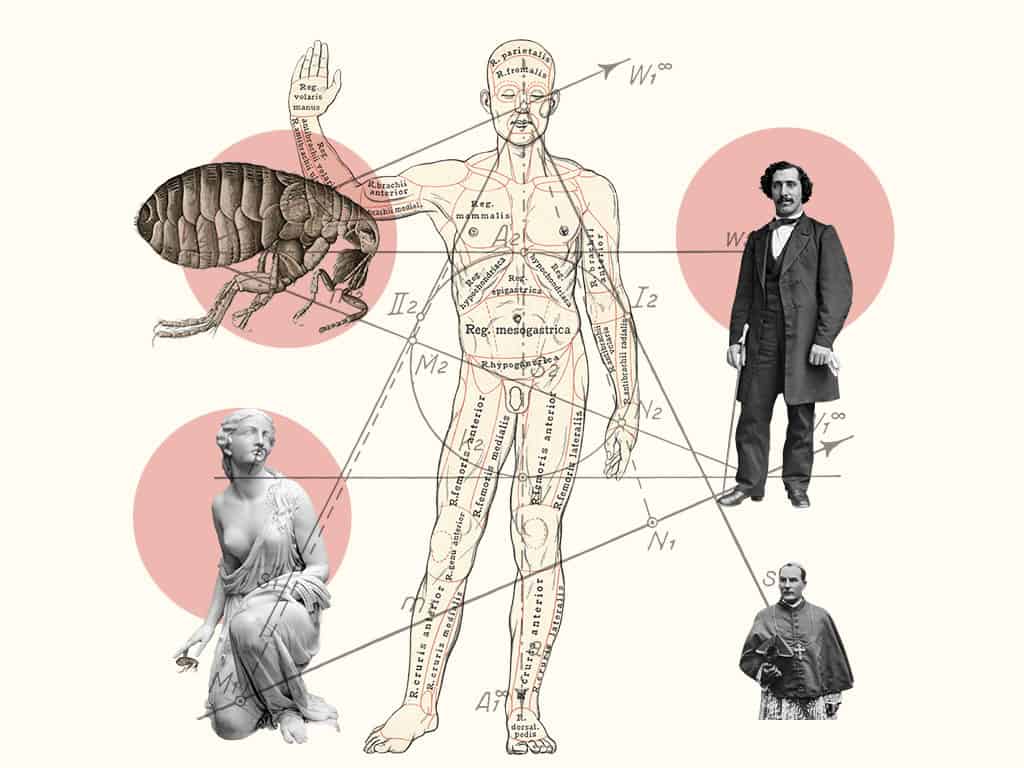
Poetry
John Donne
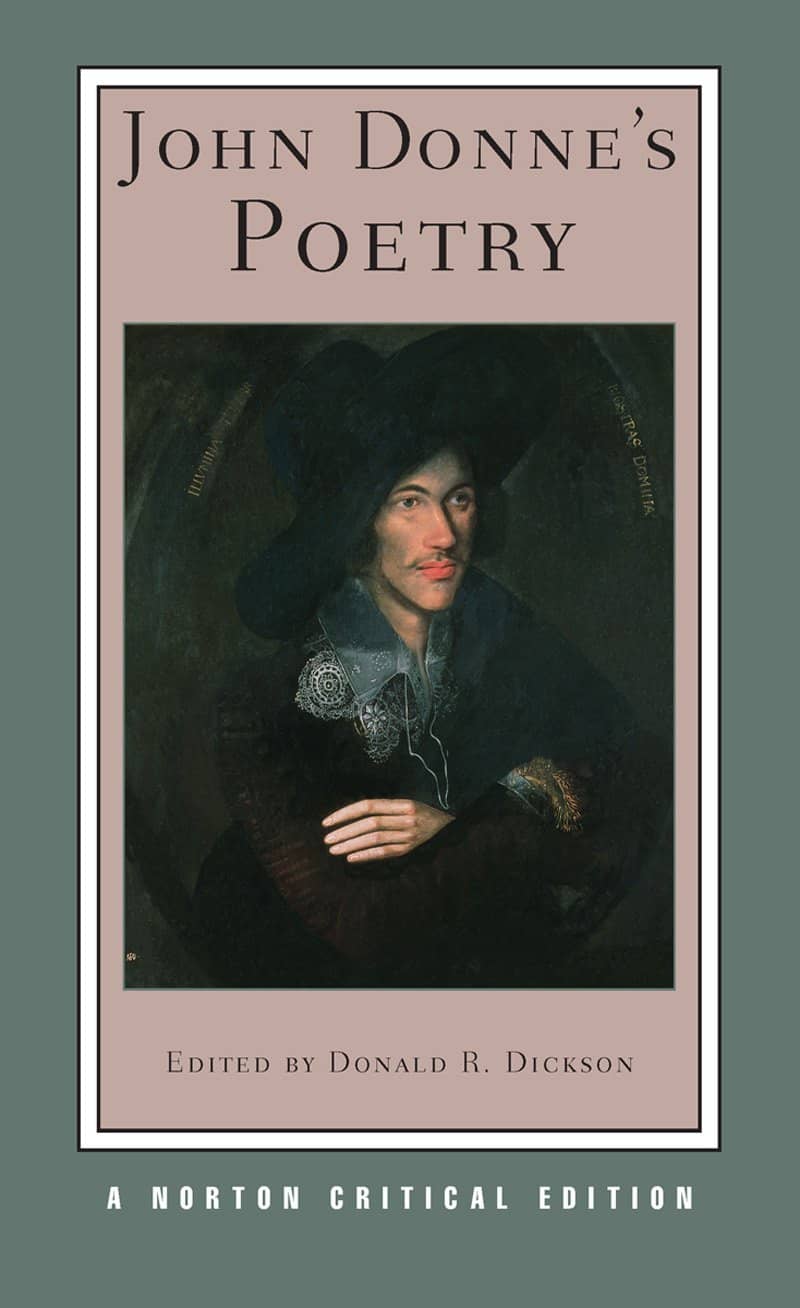
Dickson, Donald R., ed. John Donne’s Poetry. The Norton Critical Edition, Norton, 2007
English poet and sermon writer John Donne (1572-1631) is both of his time and distinctly individual in world poetry.
His work is wildly inventive, at turns light-hearted and witty and profoundly serious about love, mortality, and the life of the soul. Sometimes he plays the part of a yearning and conniving lover. For example, “The Flea” is an inventive exploration of playful sexual entreaty in the carpe diem tradition. Other times he plays the part of intellectual and spiritual seeker. For instance, “Holy Sonnet 10” is a defiant declaration of eternal life in the face of a universal concern, our own mortality. Donne’s poems often read like thought in motion, as the speaker seems to work though romantic and spiritual dilemmas. His poems reflect a range of human experience, from sincere expressions of love, to playful sexual invitations, to sober or passionate inquisitions about death and God.
Why This Text is Transformative?
Community college students find Donne’s poetry both arcane and modern, both puzzling and satisfying.
Community college students find Donne’s poetry both arcane and modern, both puzzling and satisfying. Complex human scenarios are described with language that is at turns colloquial or learned. Ideas are often constructed in extended metaphors called “conceits.” When these extended metaphors use obscurely technical imagery or make surprising, unexpected comparisons, they are called “metaphysical conceits.” Donne’s poetry invites students to inhabit the speaker’s mind, to follow his thoughts through the complexities of language and emotion in his investigations of love, society, and religion. The sample poems included are among Donne’s most accessible and exciting. As a result, they easily lend themselves to class discussion and written response.
A Focused Selection
Study Questions
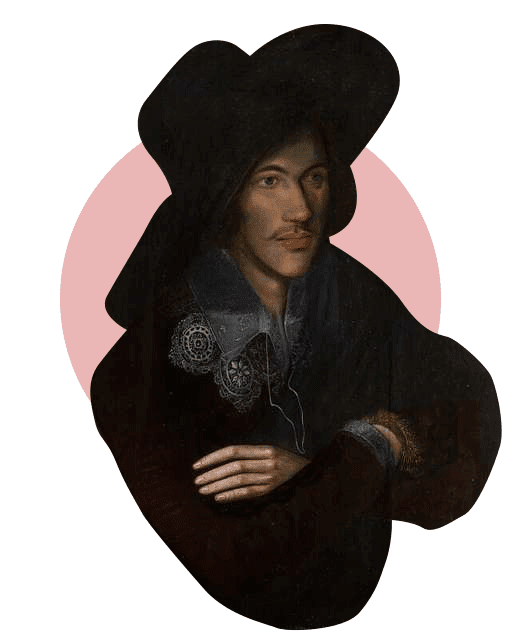
The Flea
Consider the two lovers in the poem. Where are they? How are they dressed? Describe the attitudes of the speaker and the subject. How are they behaving? Imagine the way they are communicating their ideas non-verbally. The speaker changes his approach as the poem develops. What seems to happen in between the first and second stanza and between the second and third stanza? Describe how his argument shifts in each of the three stanzas. How are the interactions of the two characters similar to ways in which you interact with others, particularly when you are trying to convince someone regarding something you want?
Elegy 19: To His Mistress Going to Bed
In what way is this elegy similar to and different from “The Flea”? Should it be considered part of the carpe diem tradition? Which lines reveal the personality or character of the speaker? Which lines suggest the attitude of the addressee? How does Donne use poetic devices of sound to create the effect of urgency? What is the metaphysical conceit built on references to colonization and the New World?
Holy Sonnet 10 and Holy Sonnet 14
What is the speaker’s relationship with God? Which examples of use of language illustrate this relationship? How does Donne utilize colloquial diction, assonance, and alliteration? What are the central paradoxes of Sonnets 10 and 14, and how do they reflect what Donne might be saying about spiritual life? How is the speaker’s relationship with a supreme being similar or different than how you regard a supreme being (or how you might imagine regarding God)? Do you find a valuable lesson in Donne’s dialog with Death and God? How might you apply Donne’s themes to your own life?
Building Bridges
A Recommended Pairing
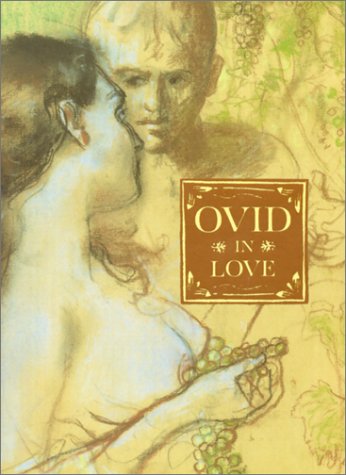
For the erotic poetry and elegies, consider pairing with Ovid’s Amores (The Loves) and Ars Amatoria (The Art of Love). Like Donne in his erotic poems, Ovid uses extended metaphors and mythical allusions to openly discuss sex and seduction the Amores and Ars Amatoria. Twenty-first-century readers marvel at the strikingly modern turns of thought and phrase used by both Ovid and Donne. Another delightful pairing can be found in several of the song lyrics of Bob Dylan. References to the silent beloved and social iconoclasm inform all three writers. Also, readers notice similarities in the ironic, self-referential, naughty personae of all three writers. All three might be considered laureates of their time. Each had connections with or criticism of the central government: Ovid paid the price of political exile; Donne converted from Roman Catholicism to become Dean of the St. Paul’s Anglican Church; Dylan was one of the most revered countercultural voices of the second half of the 20th Century.
For Donne’s devotional poetry, consider pairing with four twenty-first-century poets: Maurice Manning, Josh Bell, Matthea Harvey, and Melissa Range. Maurice Manning’s sequence of devotional poems, Bucolics, creates unexpected analogies out of Kentucky regional imagery and deploys colloquial diction, including continued addresses to God as “Boss.” Lines from Josh Bell’s devotional sequence, Zombie Sunday, juxtapose reverence and irreverence in the repeated address to “Gentle handed holy father, or whomever,” (1). Bell draws from horticulture for the technical specificity of the metaphysical conceit, and, like Donne, he brings the domain of the erotic into his religious verse. For examples of twenty-first-century devotional poetry specifically in the sonnet form, read Matthea Harvey’s Ceiling Unlimited. Like Donne, Harvey deploys the power of enjambment, unexpected objects, and paradox. In a set of Christ-centered sonnets, Melissa Range’s Horse and Rider, she combines Biblical allusion with graphic anatomical imagery and blood-rich motifs to reveal the continued effectiviness of the sonnet form today.
Supplemental Resources
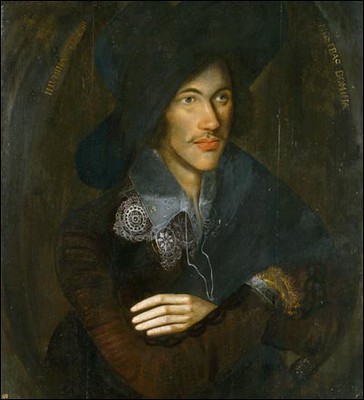
Don Quixote and the Windmills, 1945 - Salvador Dali - WikiArt.org
Cheney, Patrick, and Anne Lake Prescott, eds. Approaches to Teaching Shorter Elizabethan Poetry. MLA, 2000.
Gottlieb, Sidney, ed. Approaches to Teaching the Metaphysical Poets. MLA, 1990.
Hopler, Jay and Kimberly Johnson, eds. Before the Door of God: An Anthology of Devotional Poetry. Yale UP, 2013
“John Donne” (Audio Recordings of Donne’s Works). Librivox
Stringer, Gary A., gen. ed. Digital Donne: The Online Variorum. Indiana UP, 1985-present
Text Mapping
Discipline Mapping
English/Composition Studies
Humanities
Philosophy & Religion
Page Contributor



